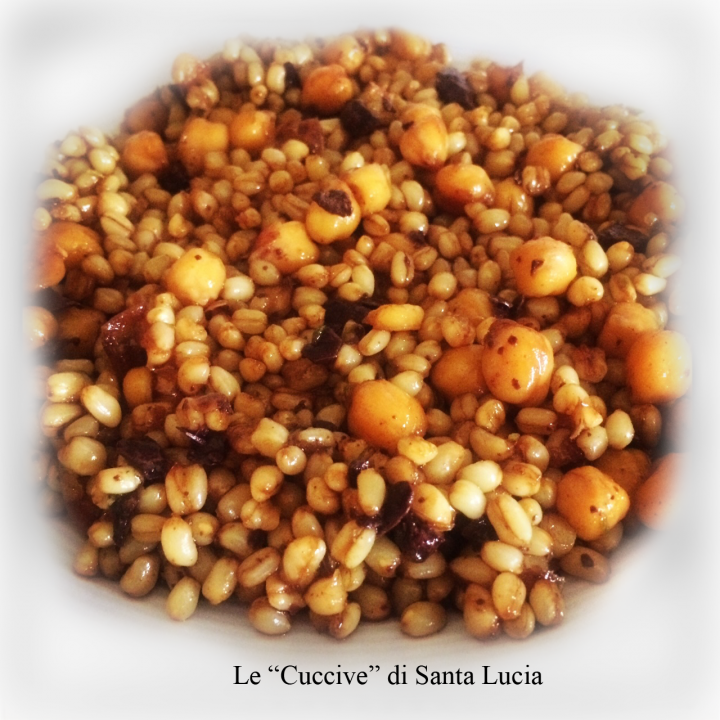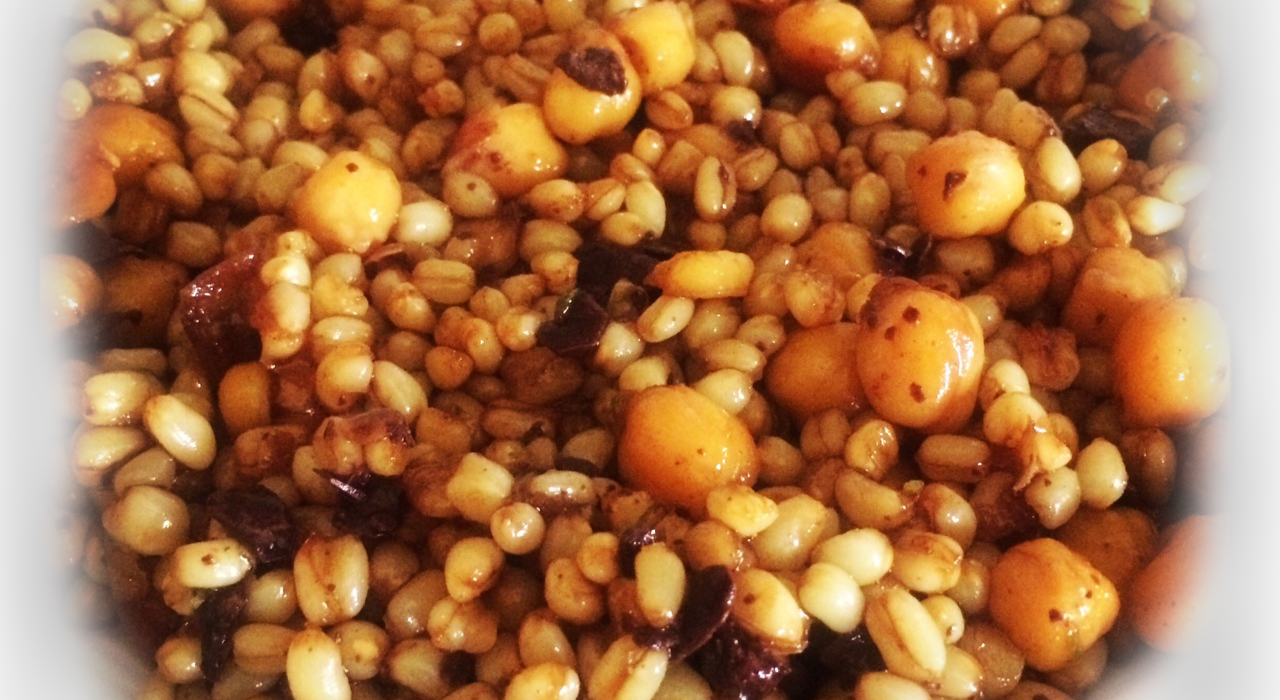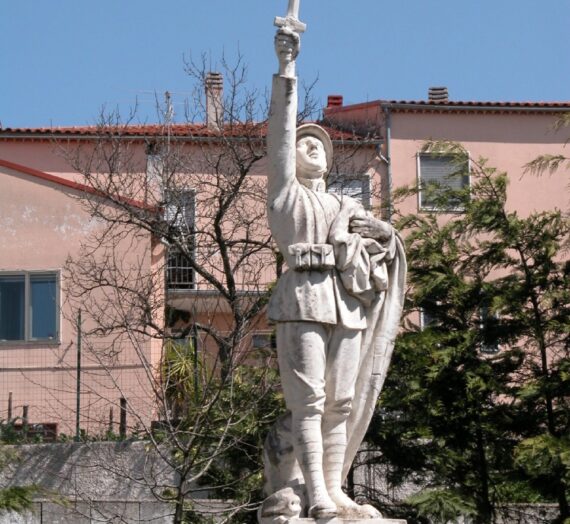By EMANUELE CATONE
The cuccive(r’ cucciv) they are a dish made of boiled and seasoned cereals and legumes, that Buccino is prepared on 13 December, day on which Saint Lucia is celebrated.
Ingredients and Preparation. According to tradition, the recipe involves the use of 13 ingredients, partly cereals (wheat, maize, spelled, barley, avena, rice) and partly legumes (beans, this, lentils, cicerchie, fave, favucce, peas). The ingredients are soaked in hot water and salt two days before 13 December; the morning of Santa Lucia, then, they all start to boil and when cooked, the cuccive they are drained and seasoned with olive oil fried with garlic and chilli or with raw oil.
The name. The name (more often cook) probably derives from the ancient Greek «kokkos» κόκκος (ie wheat, chicco), or from the vulgar Greek "tà koukkìa" (grains) as the linguist Gerard Rohlfs reports, hence the Sicilian term "cocciu"(grain).
The origin. On the origin of this dish, his friend Simone Valutti writes: "The consumption of unground cereals and legumes is linked to the grain cycle, to the need to respect the seed and propitiate its sprouting first and then death on the ear. The celebration of the vital and symbolic phase that revolves around a fundamental agricultural element for traditional agricultural communities - wheat, precisely - it is also rediscovered on the table, handed down by legends or family testimonies. (…) Anthropologists and scholars, analyzing the presence of similar dishes in the Mediterranean basin and in the Caucasian regions, they recognize the Indo-European origins of a ritual linked to the prohibition of grinding wheat to spare him further violence in view of a prosperous harvest. The wheat, whose path from seed to fruit is entrusted to the control of saints and the dead, eaten whole it retains its fecundityin progress and takes on the role of sacred food, to germinate in the bellies of the peasants who sowed it and who will reap it. The same is true for legumes. Beans, this, peas and broad beans with different shapes and colors, as well as balancing the nutritional values of cereals, they make a berthsumof images and symbolic meanings(…). In Italy this method of cooking and eating cereals and legumes is linked to the presence of monastic communities of oriental origin than here, in the Middle Ages, they adopted it and spread it. (…)».
Traditionally the cuccive in their various variations they all have the link with wheat and with Saint Lucia. One of the most accredited legends on the subject says that the 13 December 1646 a ship loaded with grain landed in Palermo (or in May in Syracuse, according to another version), ending a severe famine. In order to be able to consume it immediately, the grain was not ground, but directly boiled and eaten. Since that time the 13 December as a sign of devotion and memory of the miraculous event, flour-based foods were no longer consumed.


The diffusion. The cuccive, with some variations and with different names, they are present not only in all regions of southern Italy, but also in a vast area ranging from the Mediterranean to the Balkans and even Russia. They are prepared on the occasion of holidays in the winter or late spring. Simone Valutti writes: «The days during which this dish is consumed (as a base for desserts or in the form of soup and salad) they vary from region to region and are scheduled starting from the period of the saints and the dead (31 October, 1 e 2 novembre), passing through San Nicola (6 December), Saint Lucia (13 December), San Biagio (3 February), Saint Theodore (17 February), feast of the dead in the countries of the Byzantine rite (Saturday before the Carnival), Easter period, arriving at May 1st ".
Tradition in Buccino and surroundings. Where in Buccino, precisely for the link with Saint Lucia, this soup was believed to protect against blindness, tradition has it that the legumes were cooked in the pignata, which was then left under the fireplace so that Saint Lucia placed her foot on it, as a good omen for the winter rest of agricultural land and for spring flowering. In the past, the 13 December, after the celebration of the first mass of the day, there was the custom, especially by children, to go around the houses of the town and ask, invoking the protection of the Saint, a ladle of cuccive, which were collected in a copper bucket. It was tradition that the cuccive they were the only dish that was eaten throughout the day. In this sense, the memory of Maria Rosaria Pagnani is precious: "Always when I was a child between the Baron's arch and the Verderese house with the bridge terrace, my friends from the neighborhood and I used to go house to house asking: “Cuccive! Weather in Cuccive!”. My mother prepared small jute sacks containing beans in the entrance of the house, this, lentils, dried broad beans and cicerchie that we took with both hands. Offering and receiving was a feast seasoned with shy smiles and Saint Lucia and her martyrdom were the occasion ".
The cuccive they are prepared in the same way in San Gregorio Magno and in Romagnano, as well as in Ricigliano, where it is customary, however, to consume them in the evening of 12 December. In the neighbor Palomonte, instead, as Simone Valutti informs us, the cuccive are preparing for May Day "in view of the explosion of summer and in relation to ancient agricultural rituals of which today we have unfortunately lost track". In that case "the wheat, the granone and legumes soaked in the previous days in abundant water are the last stored in the pantries and granaries, have survived the winter and are also collected from relatives or neighbors to reach an amount that can then be shared as a sign of good luck. Spent the night in the water, the mixture of cereals and legumes is put to boil in a large pot for several hours over low heat, after the seeds have been drained and cooled, they are seasoned with salt as desired, extra virgin olive oil, vinegar, Origan. It is said that eating this dish protects the midges from attacking the bodies and plants and strengthens the ripening process of the ears ".

The soup of S. Lucia is prepared with various names also in various places of Cilento and Basilicata. For example a Padula, where it was prepared in the community, mirroring the Sicilian term, it is called the Cook, the same term is used in Basilicata, for example a Pignola it's at Castelmezzano, where even today it is prepared in a community way and is served in the square. With the name of "Cicci di Santa Lucia", the soup is called in the villages ofAvellinese he was born in Cilento. In Centola it is instead identified as the "Cicciata di Santa Lucia".
In Calabria the soup with cereals and legumes is sometimes added to the meat, as reported Vito Teti: "The" kitchen ", prepared in various festive circumstances in Calabria (Christmas time), Basilicata, Cilento and Sicily with cereals (wheat, maize, spelled, etc.), but also chickpeas, fave, boiled grass peas to which meat from small animals is sometimes added, it is a poor and elaborate dish, with antecedents in the ancient world. We are in hilly and mountainous areas, where the basis of nutrition is made up of vegetables, herbs, legumes, more, chestnuts, potatoes and where sheep and pig meat appeared at the table only on exceptional and festive occasions ".
In Sicily the cook it is more widespread today in its sweet version, in which fresh ricotta is added to the grain, sugar, dark chocolate, pumpkin, candied orange, milk and vanilla.
The cuccive are one of the dishes of our ancient tradition that, unfortunately like many other pieces of our history, it slowly disappears… Let's conclude, therefore, sharing the wish of Simone Valulti: “This ancient dish, it must germinate again, it must be reported on the tables and shared as in the past; if in some countries it is at the center of festivals and revisits in the menus of restaurants and farmhouses, disconnected from the ritual context, it is necessary to start again from the true meaning of this mixture of cooked and seasoned seeds to put back into circulation the sharing and fertility between different cultures, different eras, different flavors.
I thank Simone Valutto, Antonella Freda, Maria Rosaria Tortoriello and Cosimo Robertazzi for information on the surrounding villages; Giovanni Marottoli and Gerardo Volpe for the photos used.
BIBLIOGRAPHY
M.R. Harvest, The traditions of the South. At the table with the Saints, in "The Voice of Buccino", XIV/3 (Autumn 2008), p. 4, readable who.
K. Trimarco – A. Giglio, Ancient Flavors, in "Volcei Oggi", Year 0, Number 0 (December 2008), p. 18, readable who.
SITOGRAFIA


![Fucanoi in Buccino (year 1959) [Buccinese traditions, 1]](http://buccinonellastoria.altervista.org/Sito/wp-content/uploads/2017/03/FALO-3_risultato-570x524.jpg)

![The Sacco family in Pelotas (Brazil) [Buccinese emigration, 1]](http://buccinonellastoria.altervista.org/Sito/wp-content/uploads/2015/08/Giuseppe-Sacco_emigratoInBrasile-570x524.jpg)